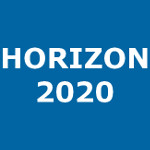High consumption of ultra-processed food may double the risk of subclinical coronary atherosclerosis: the Aragon Workers’ Health Study (AWHS)
Montero-Salazar, Henry ; Donat-Vargas, Carolina ; Moreno-Franco, Belén (Universidad de Zaragoza) ; Sandoval-Insausti, Helena ; Civeira, Fernando (Universidad de Zaragoza) ; Laclaustra, Martín (Universidad de Zaragoza) ; Guallar-Castillón, Pilar
Resumen: Ultra-processed food (UPF) consumption, which is increasing worldwide, has recently been associated with an increased risk of death and cardiovascular disease. We aimed to assess whether consumption of UPF is directly associated with subclinical coronary atherosclerosis in middle-aged men.MethodsA computed tomography scan was performed on 1876 men from the Aragon Workers’ Health Study, recruited from January 2011 to December 2014, to assess coronary calcium. All participants were free of coronary heart disease. Dietary intake was collected by a validated 136-item semi-quantitative food frequency questionnaire. UPF was defined according to the NOVA classification. Associations between consumption of total energy-adjusted UPF and Coronary Calcium Agatston Score (CACS)—categorized into CACS of 0, > 0 and < 100, and ≥ 100—were cross-sectionally assessed by generalized ordered logistic regression adjusted for main confounders.ResultsNo coronary calcium was detected in 60.2% of the participants, whereas 10.2% had a CACS ≥ 100. A significant dose-response association was observed between energy-adjusted UPF consumption and the risk of having a CACS ≥ 100, when compared with those in the lowest CACS categories (CACS of 0 together with CACS > 0 and < 100). The fully adjusted ORs (95% CI) of having a CACS ≥ 100 across quartiles of energy-adjusted UPF consumption (approximately 100 g/day in the lowest quartile (ref.) and 500 g/day in the highest) were 1.00 (ref.), 1.50 (0.93, 2.42), 1.56 (0.96, 2.52), and 2.00 (1.26, 3.16),ptrend .005.ConclusionIn this middle-aged worker’s sample, approximately 500 g/day of UPF consumption was associated with a 2-fold greater prevalence of subclinical coronary atherosclerosis than consuming only 100 g/day, independently of total energy intake and other well-established cardiovascular risk factors.
Idioma: Inglés
DOI: 10.1186/s12916-020-01678-8
Año: 2020
Publicado en: BMC Medicine 18, 1 (2020), 235 [11 pp.]
ISSN: 1741-7015
Factor impacto JCR: 8.775 (2020)
Categ. JCR: MEDICINE, GENERAL & INTERNAL rank: 13 / 167 = 0.078 (2020) - Q1 - T1
Factor impacto SCIMAGO: 3.463 - Medicine (miscellaneous) (Q1)
Financiación: info:eu-repo/grantAgreement/EC/H2020/635316/EU/Ageing Trajectories of Health: Longitudinal Opportunities and Synergies/ATHLOS
Financiación: info:eu-repo/grantAgreement/ES/ISCIII/FIS/PIE16-00022
Financiación: info:eu-repo/grantAgreement/ES/ISCIII-FIS/PI17-01709
Tipo y forma: Article (Published version)
Área (Departamento): Area Medicina (Dpto. Medicina, Psiqu. y Derm.)
Área (Departamento): Área Medic.Prevent.Salud Públ. (Dpto. Microb.Ped.Radio.Sal.Pú.)
 You must give appropriate credit, provide a link to the license, and indicate if changes were made. You may do so in any reasonable manner, but not in any way that suggests the licensor endorses you or your use.
You must give appropriate credit, provide a link to the license, and indicate if changes were made. You may do so in any reasonable manner, but not in any way that suggests the licensor endorses you or your use.
Exportado de SIDERAL (2025-01-14-15:49:31)
Visitas y descargas
Idioma: Inglés
DOI: 10.1186/s12916-020-01678-8
Año: 2020
Publicado en: BMC Medicine 18, 1 (2020), 235 [11 pp.]
ISSN: 1741-7015
Factor impacto JCR: 8.775 (2020)
Categ. JCR: MEDICINE, GENERAL & INTERNAL rank: 13 / 167 = 0.078 (2020) - Q1 - T1
Factor impacto SCIMAGO: 3.463 - Medicine (miscellaneous) (Q1)
Financiación: info:eu-repo/grantAgreement/EC/H2020/635316/EU/Ageing Trajectories of Health: Longitudinal Opportunities and Synergies/ATHLOS
Financiación: info:eu-repo/grantAgreement/ES/ISCIII/FIS/PIE16-00022
Financiación: info:eu-repo/grantAgreement/ES/ISCIII-FIS/PI17-01709
Tipo y forma: Article (Published version)
Área (Departamento): Area Medicina (Dpto. Medicina, Psiqu. y Derm.)
Área (Departamento): Área Medic.Prevent.Salud Públ. (Dpto. Microb.Ped.Radio.Sal.Pú.)
Exportado de SIDERAL (2025-01-14-15:49:31)
Permalink:
Visitas y descargas
Este artículo se encuentra en las siguientes colecciones:
Articles > Artículos por área > Medicina Preventiva y Salud Pública
Articles > Artículos por área > Medicina
Record created 2025-01-14, last modified 2025-01-14
